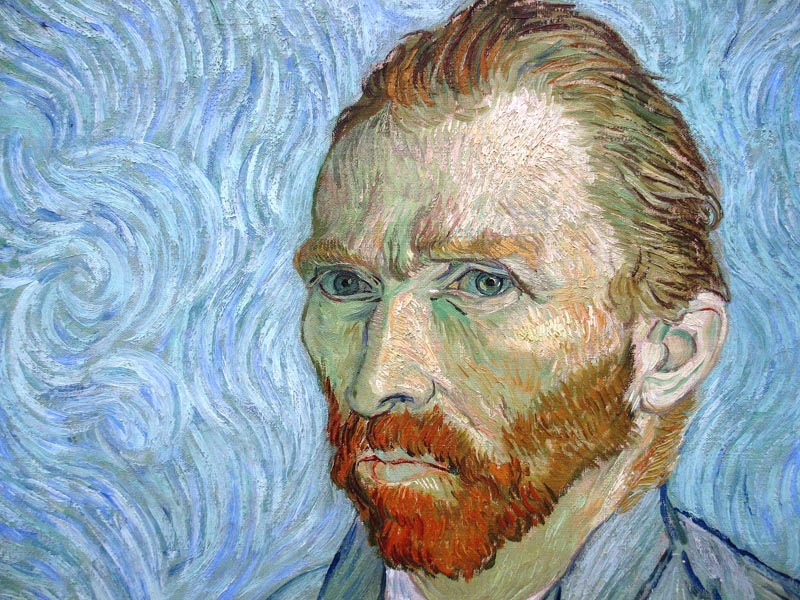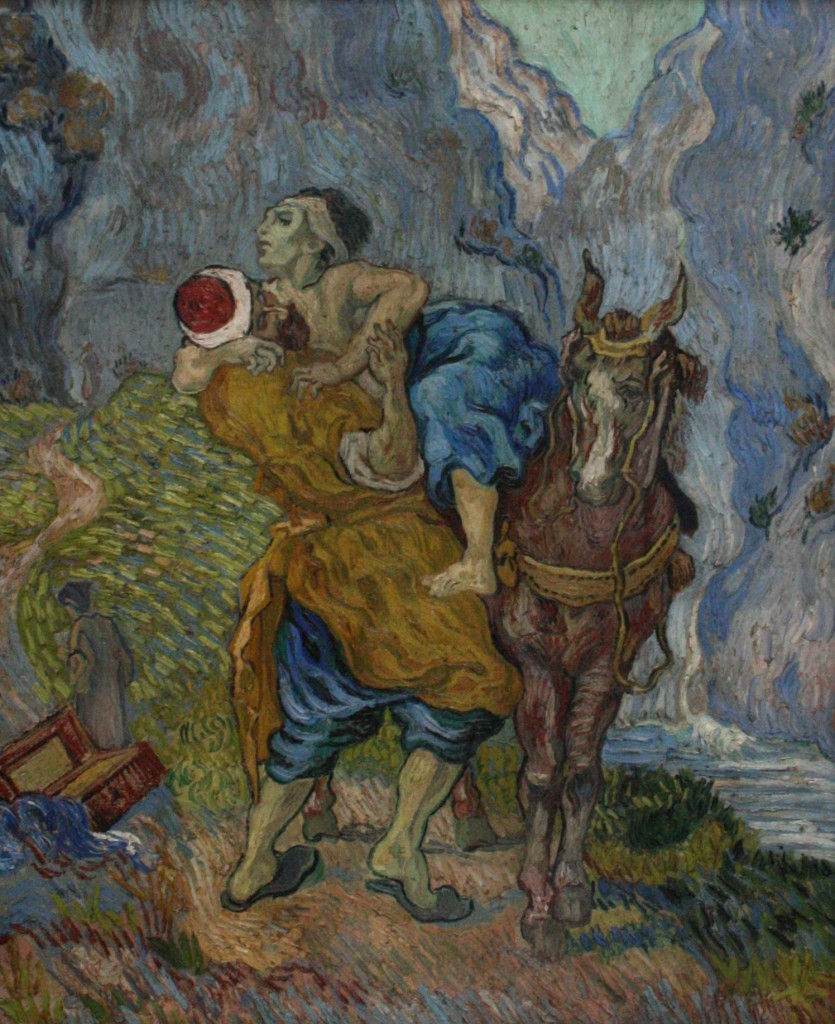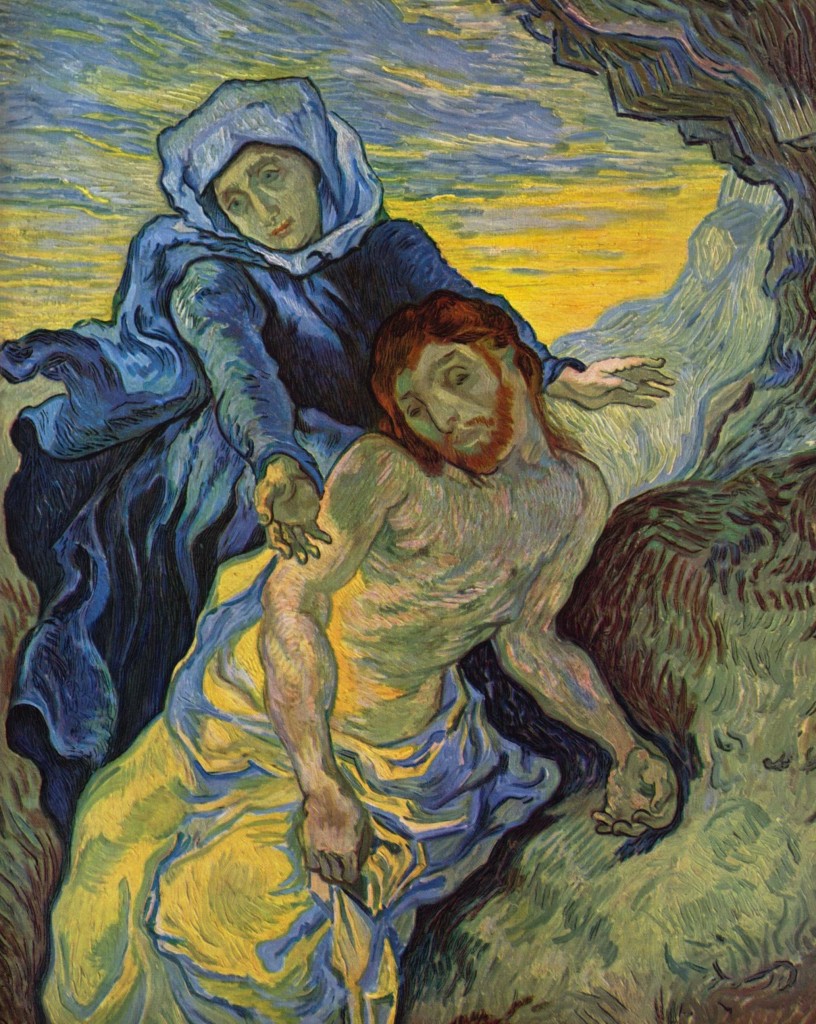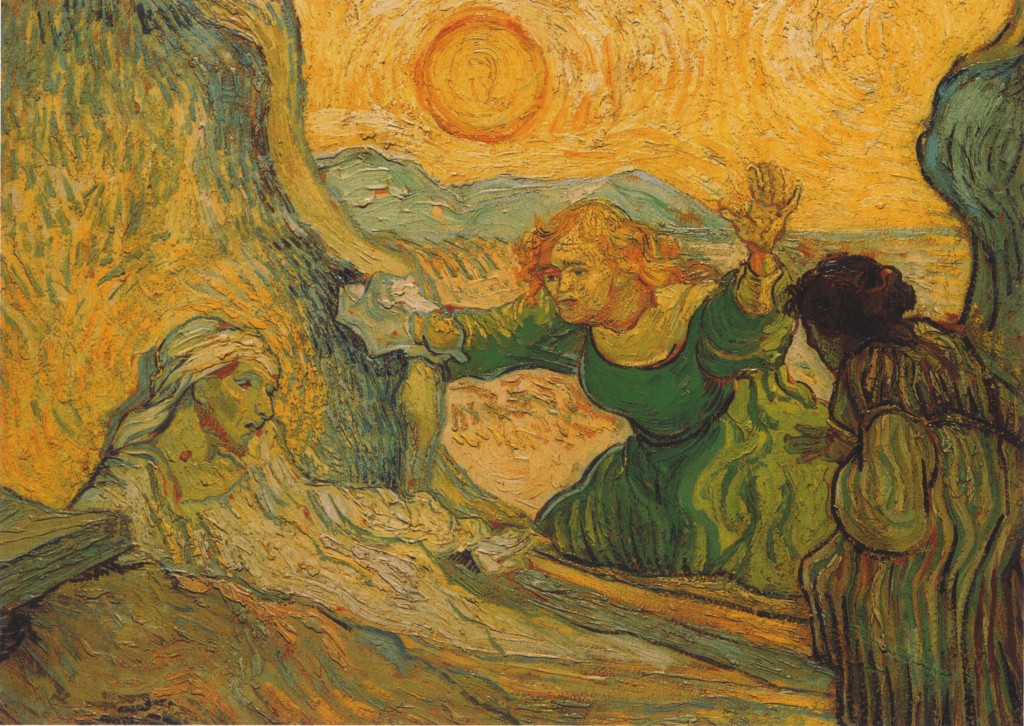
One of 30 self portraits Van Gogh produced within his lifetime, 1889 or 1890, Saint Remy
Vincent van Gogh‘s iconic red beard is found in his portraits of both Jesus and Lazarus. Van Gogh’s Biblical paintings are largely overlooked. Even at the Van Gogh Museum in Amsterdam, they are kept in the basement where the people-traffic is minimal.
It is the Easter season, after all. While I am not authorized to take the paintings out of the physical basement in Amsterdam, I certainly can place them in the virtual reality for folks to see! Here are the more notable ones. The patina of post modernism has largely affected the contemporary view of Vincent van Gogh , but there is no question in reviewing his extensive letters that he remained a follower of Jesus for his entire life.
It is worth mentioning that these three paintings were all completed at the Saint Paul Asylum in Saint Remy, France at the height of van Gogh’s dementia most probably brought on by substance abuse from the drinking of Absinthe which at the time included the toxin “wormwood”. Absinthe was a drink of the era which celebrated the Bohemian lifestyle until its ban in 1915. Picasso, van Gogh, Oscar Wilde and Ernest Hemingway were proficient drinkers of this toxic cocktail before the ban. This might explain certain behavioral and physical issues with some of those artists.

The Good Samaritan, 1890, Saint Remy
The man from Samaria pushes the robbed man onto his horse. In the background to the left – two men can be seen who let the wounded man lay on the road when they passed him by. They were a priest and a man from the house of Levi; obviously they were not as righteous as their reputations would suggest. Only the Samaritan helped the wounded man.
Van Gogh to Theo (brother) in 1880:
“I think that everything that is really good and beautiful, the inner, moral, spiritual and sublime beauty in men and their works, comes from God, and everything that is bad and evil in the works of men and in men is not from God, and God does not approve of it. But I cannot help thinking that the best way of knowing God is to love many things. Love this friend, this person, this thing, whatever you like, and you will be on the right road to understanding Him better, that is what I keep telling myself. But you must love with a sublime, genuine, profound sympathy, with devotion, with intelligence, and you must try all the time to understand Him more, better and yet more. That will lead to God, that will lead to an unshakeable faith.”

Pieta, 1890, Saint Remy
This Van Gogh pieta (Mary in sorrow over her dead son) was painted in the mental hospital in Saint Remy in the year of van Gogh’s death.
Van Gogh to Theo, 1882:
“What am I in the eyes of most people? — a nonentity, an eccentric, or an unpleasant person — somebody who has no position in society and will never have; in short, the lowest of the low. All right, then — even if that were absolutely true, then I should one day like to show by my work what such an eccentric, such a nobody, has in his heart. That is my ambition, based less on resentment than on love in spite of everything, based more on a feeling of serenity than on passion. Though I am often in the depths of misery, there is still calmness, pure harmony and music inside me. I see paintings or drawings in the poorest cottages, in the dirtiest corners. And my mind is driven towards these things with an irresistible momentum.”

The Raising of Lazarus, 1890, Saint Remy
Lazarus is brought back from the dead by Jesus. Where is Jesus in the painting? He is not portrayed. Mary and Martha, the sisters of Lazarus, look on as Lazarus returns to life. Some have suggested that the red beard of van Gogh on the Lazarus figure is intended to be an autobiographical reference. They also suggest that perhaps the artist drew parallels between the story of this biblical character being summoned back to life and the artist’s own hoped for journey out of isolation and despair. The bright sun brings the triangulation of Lazarus, Mary and Martha together.






